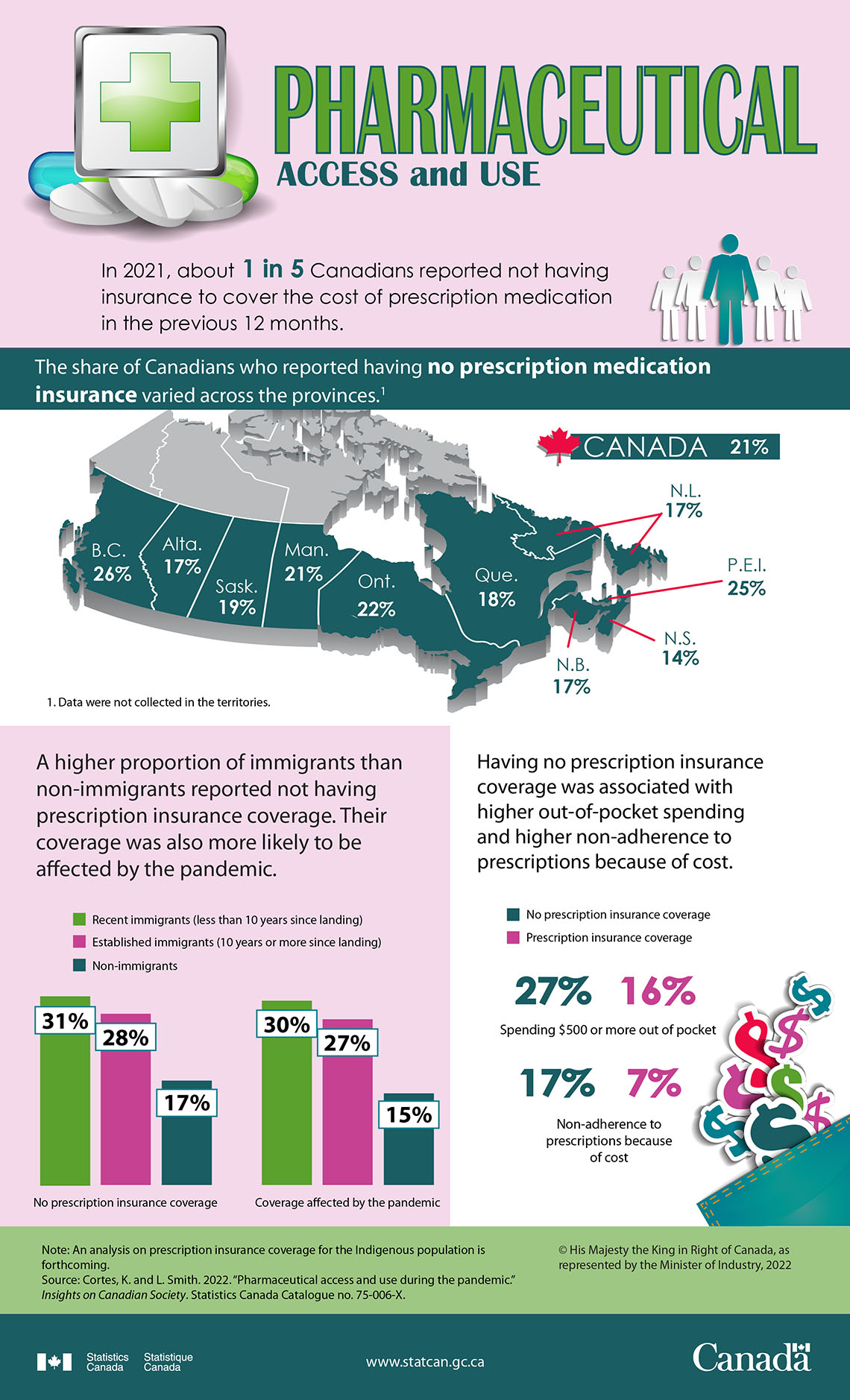Pharmaceutical access and use

Description: Pharmaceutical access and use
Pharmaceutical access and use
In 2021, about 1 in 5 Canadians reported not having insurance to cover the cost of prescription medication in the previous 12 months.
The share of Canadians who reported having no prescription insurance varied across the provinces.Note 1
| Geography | No insurance |
|---|---|
| Canada | 21% |
| British Columbia | 26% |
| Alberta | 17% |
| Saskatchewan | 19% |
| Manitoba | 21% |
| Ontario | 22% |
| Quebec | 18% |
| New Brunswick | 17% |
| Nova Scotia | 14% |
| Prince Edward Island | 25% |
| Newfoundland and Labrador | 17% |
A higher proportion of immigrants than non-immigrants reported not having prescription insurance coverage. Their coverage was also more likely to be affected by the pandemic.
| Immigrant status | No prescription insurance coverage | Coverage affected by the pandemic |
|---|---|---|
| Recent immigrants (less than 10 years since landing) | 31% | 30% |
| Established immigrants (10 years or more since landing) | 28% | 27% |
| Non-immigrants | 17% | 15% |
Having no prescription insurance coverage was associated with higher out-of-pocket spending and higher non-adherence to prescriptions because of cost.
| Spending $500 or more out of pocket | Non-adherence to prescriptions because of cost | |
|---|---|---|
| No prescription insurance coverage | 27% | 17% |
| Prescription insurance coverage | 16% | 7% |
Note: An analysis of prescription insurance coverage for the Indigenous population is forthcoming.
Source: Cortes, K. and L. Smith. 2022. “Pharmaceutical access and use during the pandemic.” Insights on Canadian Society. Statistics Canada Catalogue no. 75-006-X.
- Date modified: